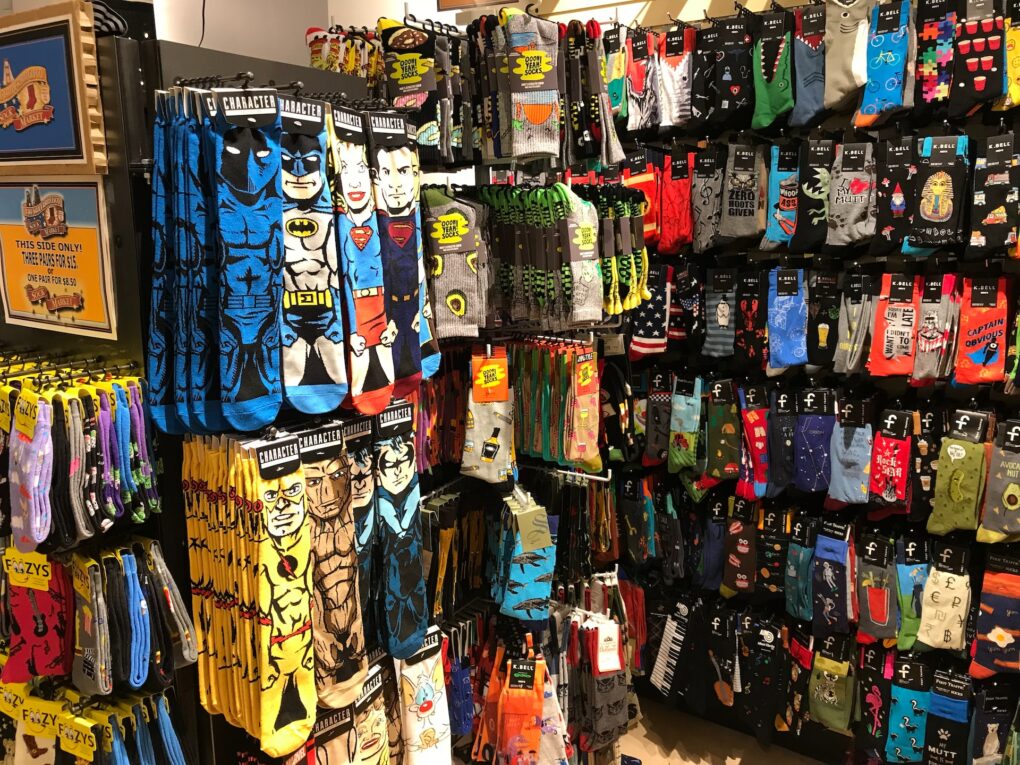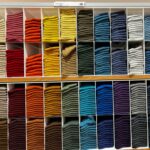Introduction: Unveiling the World
Welcome to the dynamic landscape of wholesale fashion, where every thread weaves a tale of innovation and style. In this blog, we embark on a journey into the heart of one of the most indispensable yet often underestimated elements of our wardrobes – socks. More than just foot coverings, socks have evolved into a canvas of self-expression and fashion-forward statements.
“The Best Wholesale Socks” isn’t just a title; it’s a promise of excellence and exploration. In the following paragraphs, we’ll navigate the intricacies of the wholesale sock industry, uncovering the nuances that make it a crucial player in the broader tapestry of fashion commerce.
Whether you’re a seasoned entrepreneur seeking to optimize your sock business or a budding enthusiast eager to tap into the potential of this vibrant market, our guide aims to illuminate the path ahead. We’ll dissect the choices between online and offline suppliers, explore the significance of personalized customization, and understand the power of private labeling in shaping brand identity.
So, join us as we unravel the threads of this exciting venture. From market trends to design innovations, social media strategies to the influence of fashion events, our journey into the world of “The Best Wholesale Socks” promises to be a source of inspiration and insights for all enthusiasts of fashion entrepreneurship. Let’s dive into the sock revolution and discover how a keen understanding of this niche can elevate your business aspirations.
Wholesale Defined: Unveiling the Core Concepts
In the dynamic realm of commerce, wholesale serves as a cornerstone, shaping the intricate relationships between manufacturers and retailers. At its essence, wholesale refers to the practice of buying and selling goods in bulk, typically at a lower unit cost, with the intention of resale at a profit.
Characteristics of Wholesale Commerce:
- Volume Transactions: Wholesale transactions are characterized by large quantities. Buyers, often retailers, purchase goods in bulk, allowing them to benefit from economies of scale and reduced per-unit costs.
- Price Advantage: One of the primary attractions of wholesale lies in its cost-effectiveness. Bulk purchasing enables retailers to secure products at a lower price per unit, enhancing profit margins during resale.
- Intermediary Role: Wholesalers act as intermediaries between manufacturers and retailers. They streamline the distribution process by purchasing goods in large quantities from manufacturers and redistributing them to retailers.
- B2B Focus: Wholesale transactions predominantly occur between businesses (B2B). This distinguishes wholesale from retail, which involves direct sales to consumers.
- Warehousing and Distribution: Wholesalers often manage extensive warehousing facilities to store and organize the bulk inventory they acquire. Efficient distribution channels ensure timely delivery to retailers.
- Bulk Packaging: Products in the wholesale market are typically packaged in larger quantities suitable for retailers. This facilitates efficient handling and distribution throughout the supply chain.
Understanding the intricacies of wholesale, including its defining characteristics, is pivotal for businesses aiming to thrive in this expansive marketplace. As we delve deeper into the world of wholesale socks, these foundational concepts will serve as our guiding principles, unlocking the potential for strategic decision-making and success.

Selecting Suppliers: Navigating the Key Factors in Wholesale Partnerships
In the intricate landscape of wholesale business, the choice of suppliers is a pivotal decision that can significantly impact the success of your enterprise. Several key factors should be meticulously considered when selecting suppliers to ensure a seamless and mutually beneficial partnership.
- Reliability and Reputation:
- Opt for suppliers with a proven track record of reliability. Assess their reputation in the industry through reviews, testimonials, and references to gauge their credibility.
- Quality of Products:
- The quality of the products offered by a supplier is non-negotiable. Thoroughly evaluate samples and assess the manufacturing processes to ensure the merchandise aligns with your brand’s standards.
- Pricing Structure:
- A transparent and competitive pricing structure is essential. Analyze the supplier’s pricing models, including bulk discounts and payment terms, to ensure they align with your budgetary considerations.
- Capacity for Scalability:
- Choose suppliers capable of scaling production to accommodate your business growth. A flexible and scalable partner ensures that as your demand increases, the supplier can meet the rising needs without compromising on quality.
- Communication and Responsiveness:
- Effective communication is the bedrock of a successful supplier relationship. Select partners who prioritize open and clear communication and demonstrate responsiveness to queries and concerns.
- Location and Logistics:
- Consider the geographical location of suppliers and its implications on shipping costs, delivery times, and overall logistics. Proximity can be advantageous for quicker deliveries and reduced transportation expenses.
- Ethical and Sustainable Practices:
- In an era of heightened awareness, align your business with suppliers committed to ethical and sustainable practices. This not only reflects positively on your brand but also caters to the growing consumer demand for eco-friendly choices.
- Financial Stability:
- Assess the financial stability of potential suppliers. A financially secure partner is more likely to fulfill commitments and weather industry fluctuations, ensuring a stable supply chain.
- Flexibility and Customization:
- Opt for suppliers willing to adapt to your specific needs. The ability to customize products and packaging can set your brand apart in the market and meet the unique preferences of your target audience.
- Legal Compliance:
- Ensure that potential suppliers adhere to legal and regulatory standards in their operations. Verify licenses, certifications, and compliance with industry-specific regulations to mitigate legal risks.
As we navigate the intricate process of selecting suppliers for “The Best Wholesale Socks,” these key factors will serve as a compass, guiding us towards forging partnerships that are not just transactional but strategic and enduring.
Comparing Online and Offline Wholesale: Navigating the Pros and Cons
In the expansive world of wholesale trade, the choice between online and offline channels is a strategic decision that significantly shapes the dynamics of your business. Each avenue comes with its unique advantages and challenges, necessitating a thoughtful evaluation based on your specific needs and objectives.
Online Wholesale:
Pros:
- Global Reach: Online platforms provide unparalleled global exposure, allowing businesses to connect with a diverse range of customers beyond geographical constraints.
- Cost Efficiency: Lower operational costs are a hallmark of online wholesale. Reduced expenses on physical infrastructure translate into potential cost savings for both buyers and sellers.
- Convenience: The convenience of 24/7 accessibility facilitates seamless transactions, catering to the flexibility required in today’s fast-paced business environment.
- Efficient Inventory Management: Digital platforms often offer advanced inventory management tools, streamlining the tracking and replenishment of stock for enhanced efficiency.
Cons:
- Lack of Physical Interaction: The absence of face-to-face interactions may hinder relationship-building and the tactile assessment of product quality.
- Shipping Costs: While online platforms offer global reach, shipping costs can be a substantial factor, impacting the overall cost-effectiveness of transactions.
- Security Concerns: Cybersecurity is a critical consideration, with the potential for data breaches and online fraud posing risks to both buyers and sellers.
Offline Wholesale:
Pros:
- Personalized Relationships: Face-to-face interactions foster personal relationships, facilitating trust-building and a deeper understanding of business needs.
- Immediate Inspection: Buyers have the opportunity to physically inspect products, ensuring quality and meeting specific standards before making purchasing decisions.
- Negotiation Power: In-person negotiations can be more dynamic, allowing for real-time adjustments to terms, prices, and other contractual details.
Cons:
- Limited Reach: Offline wholesale is inherently constrained by geographical limitations, restricting the potential market and customer base.
- Higher Operational Costs: Maintaining physical storefronts or showrooms comes with higher operational costs, impacting overall profitability.
- Time-Consuming Transactions: Offline transactions may take longer due to travel, meetings, and manual processing, potentially affecting the speed of business operations.
As we navigate the intricate path of selecting wholesale channels for “The Best Wholesale Socks,” a careful consideration of these pros and cons will guide us towards a strategy that aligns with our business goals and customer expectations.

Recent Trends in the Wholesale Socks Market: A Comprehensive Overview
The wholesale socks market, ever-responsive to evolving consumer preferences and industry dynamics, is currently witnessing a fascinating array of trends that are shaping the landscape. For businesses aiming to thrive in this dynamic sector, staying attuned to these trends is crucial for informed decision-making and strategic positioning.
- Sustainable Sock Options:
- The rise of eco-conscious consumerism has propelled sustainable sock options to the forefront. From organic materials to recycled fibers, businesses are increasingly incorporating environmentally friendly practices into their sock manufacturing.
- Bold Colors and Patterns:
- Socks are no longer just a functional accessory but a vibrant expression of style. Recent trends showcase a surge in demand for socks featuring bold colors and eye-catching patterns, allowing consumers to make a fashion statement from ankle to toe.
- Performance and Athletic Socks:
- With an increased focus on health and wellness, there’s a growing demand for performance-oriented and athletic socks. These socks are designed for specific activities, providing enhanced comfort, moisture-wicking properties, and support.
- Personalized and Customized Designs:
- Consumers are gravitating towards personalized and customized sock designs that reflect their individuality. Businesses that offer customization options, such as monogramming or unique prints, are gaining traction in the market.
- Innovative Materials and Technology:
- Technological advancements have permeated the sock industry, leading to the use of innovative materials and manufacturing techniques. From temperature-regulating fabrics to antimicrobial properties, socks are evolving to meet diverse consumer needs.
- Collaborations and Limited Edition Releases:
- Collaborations between sock brands and influencers or other businesses are creating buzz in the market. Limited edition releases, often tied to exclusive partnerships, are fostering a sense of urgency and desirability among consumers.
- Compression Socks on the Rise:
- The awareness of health benefits associated with compression socks is driving their popularity. Beyond medical use, these socks are increasingly embraced for everyday wear, catering to consumers seeking comfort and improved circulation.
As we navigate the exciting terrain of the wholesale sock market for “The Best Wholesale Socks,” these trends serve as beacons, guiding our exploration and influencing our decisions for a successful and trend-conscious venture.
Captivating Different Markets through Personalized Customization
In the competitive realm of wholesale socks, the power of personalized customization stands as a potent tool to attract diverse markets. Tailoring sock designs to cater to different consumer segments not only fosters brand loyalty but also positions a business as responsive to individual preferences.
- Understanding Target Demographics:
- Thorough market research is the foundation. Understand the distinct preferences and style inclinations of various demographics, from age groups to cultural backgrounds.
- Offering Varied Design Options:
- Provide an extensive range of design options, from vibrant colors to unique patterns. Offering versatility ensures your sock line resonates with a broader audience.
- Customizable Features:
- Integrate customizable features such as monogramming, allowing customers to add a personal touch to their socks. This not only enhances the product but also fosters a sense of ownership.
- Themed Collections:
- Introduce themed sock collections that align with different occasions, seasons, or hobbies. This approach caters to diverse interests and allows customers to find socks that suit their specific needs.
- Size Inclusivity:
- Embrace size inclusivity to accommodate various body types. Ensuring a comprehensive size range reflects a commitment to meeting the diverse needs of all consumers.
- Collaborations and Limited Editions:
- Partner with influencers or collaborate with other brands for exclusive sock designs. Limited edition releases generate excitement and cater to consumers seeking unique and trendy options.
By weaving a tapestry of personalized options, businesses can transcend generic offerings and appeal to the unique tastes of different markets. In the journey towards “The Best Wholesale Socks,” personalized customization emerges as a key ingredient for success in a diverse and discerning market landscape.







